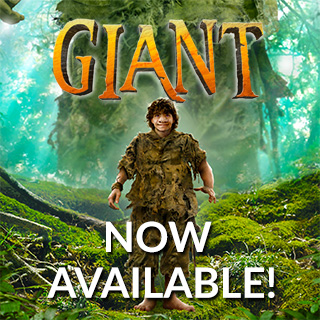Vision, Voice, and the Power of Creation
by T. A. Barron
Voice of Youth Advocates (VOYA) Magazine
April 1999
PDF
My children’s favorite question, beyond doubt, is “Dad, is that true?” Whenever we read a book together—regardless of the genre of the tale, the sophistication of the language, or the time of the day—one of the kids will invariably ask that question.
Now, since my children range in age from two years old up to eleven, the question means something different to each of them. When it comes from my youngest child, she is really asking, “Did that actually happen?” When it’s my eldest, she really wants to know, “Is that true to the human condition?” Whatever the context, the question is profound. In my view, it is the most fundamental question that anyone can pose about literature.
The words ‘Is that true?’ embody the ultimate challenge for any writer. The key to writing fiction, I believe — the kind of fiction that has the power to touch people’s lives, and even change them profoundly — is making it true. Literature that meets this challenge awakens our senses, inspires our emotions, engage our minds, and enlivens our souls. And while this standard clearly applies to imaginary worlds (sometimes called “fantasy,” although I prefer other terms), it also applies any form of fiction.
The power of such fiction is as immense as the power of imagination, a gift we all share. Nothing is more potent, more unstoppable, than a living, breathing imagination. If a reader feels that a tale is true, at the deepest levels, then that reader holds a complete vision of the experience. And if he or she can envision a new world, then it is possible to enter into it and inhabit it. And yes: Create it.
For the power of imagination is nothing less than the power of creation.
How, though, is this power tapped? In countless ways, all of them deeply mysterious—and constantly humbling to all of us who try. One way is through the characters, who sometimes can feel so true for both writer and reader that they can literally rise up and walk off the page. When characters feel that real, they possess an integrity, an inner flame, of their own, something akin to the Latin anima, which means life force or soul. Such characters take on a life of their own. And that is because they possess, quite literally, a life of their own.
Another way to tap the power of imagination is through place. My own background as a writer is rooted in nature, having grown up reading Henry David Thoreau, Rachel Carson, and John Muir long before I ever dipped into Madeleine L’Engle, Lloyd Alexander, Ursula Le Guin, E. B. White, or J. R. R. Tolkien. My early writings were really nature journals; at nine I wrote a complete biography—of a tree. (It was a once-majestic chestnut tree not far from my home.) So it should come as no surprise that I view place as much more than just a setting for a story. It is, in truth, another form of character, no less alive and complex, mysterious and contradictory, than the richest character in human form.
Yet deeper than character, or even place, is another concept: Voice. More than any other doorway to the imagination, I find this one the trickiest to open—and the hardest to close. For a character’s true voice is heard, its tones, cadences, and ideas are long remembered.
The ancients used anima, in fact, to describe breath as well as soul. That is wholly appropriate, for in the breath—the voice—of a character lies its essential spirit. If the writer can truly hear the voice of a character, so will the reader.
But how does a writer find that authentic voice, especially if the character’s life and experience are different from the writer’s own? I cannot say precisely how, for the process remains, even now, as magical and mysterious for me as it seemed when I started writing full time a decade ago. All I can say with certainty is that the process of finding true voices of characters requires large doses of respect and humility. And that it must involve both sides of one’s brain: the creative and associative side is just as essential as the rational, research-oriented side. But with enough labor and time (and magic), it can be done. It is possible to find a character’s true voice whether it is the voice of a boy, a girl, a dog, a tree, or a luminous-winged creature from another galaxy.
I first understood the depth—and the rewards—of this challenge when I wrote three novels that feature a twelve-year-old girl as the hero. Each of the novels (Heartlight, The Ancient One, and The Merlin Effect), features a different adventure of Kate Gordon, who is both strong and vulnerable, deeply wise and quite insecure. Finding her true voice inside myself, a forty-something man, was no easy process. It proved to be a considerable challenge for me. But it has, in the end, become one of the most rewarding experiences of my writing career, stretching me further than I could have imagined.
After concluding that I wanted my lead character to be a girl, I wrote my first draft of the initial manuscript. The trouble was, the heroic girl in the story was clearly a boy with a braid. I needed to go deeper, and listen better. So I interviewed my wife, my nieces, and my female cousins about their lives as twelve-year-olds. Next, I set aside my manuscript completely and wrote a brief biography of Kate Gordon. In time, I came to know her, so well that I couldn’t resist writing three whole novels about her adventures.
Right now, I am spending a lot of time listening to the voice of a particularly compelling character: the young Merlin. In The Lost Years of Merlin epic, which will comprise five books when it is done, we have the boy who will one day become the legendary mage of Camelot, the mentor to King Arthur whom we know as Merlin. But he has no idea of that glorious destiny as the story begins. Rather, the opening scene of Book One, The Lost Years of Merlin, finds a lone, half-drowned boy who washes ashore on a strange coastline. He has no memory of his past, nor even his own name—let alone any sense of the wondrous future that awaits him.
I have worked hard over the last seven years to hear the voice of that boy. I knew that this tale of Merlin’s lost youth needed to be told by the wizard himself, in the first person. But it took writing two complete drafts of the first book in the third person before the voice came clear enough that I felt it sounded true. For it had to fit not only the boy Merlin but the elder wizard he would become: a character with deep understanding of universal spiritual truths, of the natural world, and the light and dark in humanity. (Anyone who would like to learn more about the richness and depth of Merlin as a character might check my article The Remarkable Metaphor of Merlin in Book Links, January 1998, or simply visit my official web site at(http://www.tabarron.com.)
In the end, I finally heard the voice of Merlin thanks to a surprising source: the haunting, mysterious hooting of a great horned owl outside the window of my Colorado home. As I listened to that owl’s resonant call in the pre-dawn hours one morning, something about it gave me a whole new cadence, a whole new sound. And then, a whole new voice. In that very moment, I put my old draft aside and started to write Merlin’s opening lines:
If I close my eyes, and breathe to the rolling rhythm of the sea, I can still remember that long ago day. Harsh, cold, and lifeless it was, as empty of promise as my lungs were empty of air.
Since that day, I have seen many others, more than I have the strength left to count. Yet that day glows as bright as the Galator itself as bright as the day I found my own name, or the day I first cradled a baby who bore the name Arthur Perhaps I remember it so clearly because the pain, like a scar on my soul, will not disappear. Or because it marked the ending of so much. Or, perhaps, because it marked a beginning as well as an ending. The beginning of my lost years.
If that voice sounds true, don’t thank me. Thank that great homed owl. (Or perhaps it was not an owl after all?) And thank the children, my own and others, who have never forgotten that a good story can be true. For they understand that the power of imagination is truly the power of creation.

